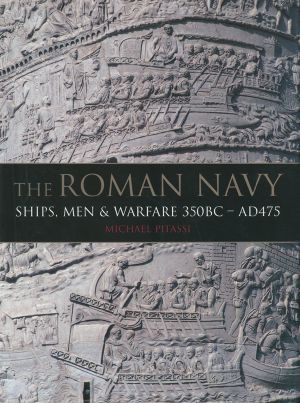The Roman Navy

- Authors
- Pitassi, Michael Paul
- Publisher
- Seaforth Publishing
- ISBN
- 9781848320901
- Date
- 2012-10-24T00:00:00+00:00
- Size
- 21.26 MB
- Lang
- en
The Roman Navy was remarkable for its size, reach and longevity. As significant as the Royal Navy was to the British Empire in the nineteenth century, the Roman Navy was crucial to the extraordinary expansion of Imperial power and for its maintenance over a period of more than 800 years. The fabric and organization of this maritime force is at the core of this new book.At the height of its power the Roman Navy was, at least in numerical terms, the largest maritime force ever to have existed. It employed tens of thousands of sailors and maintained and fought fleets of ships larger than any forces since. In these pages the author looks at all the aspects of the Navy in turn. Shipbuilding, rigs and fittings, and shipboard weaponry are covered as are all the principal ship from the earliest types to the very last. The command structure is outlined, as are all aspects of the crews lives, their recruitment, terms of service, training and uniforms. Life onboard, food and drink, discipline, religion and superstition are described, while seamanship and navigation are dealt with along with bases and shore establishments. Operations feature prominently, the allied and enemy navies compared, and specimen battles employed to explain fighting tactics.All these aspects changed and developed hugely over the great span of the Roman empire but this fascinating book brings this complex story together in one brilliant volume.REVIEWS Although nearly as important as the legions to the Roman s centuries of domination of the Mediterranean world, the Roman fleet has tended to be overlooked by historians. In The Roman Navy, independent scholar Pitassi gives us a survey of that neglected service. He covers the evolution of Roman warships, organizational and command structure of the fleet, personnel and their conditions of service, and the nature of seamanship in the period. Pitassi also takes a look at some operations and the tactics used, in addition to brief treatments of allied and enemy naval services. So while this is not a history of the Roman Navy, which may not be possible given our slender sources, it certainly fills an important need, and is a useful read for anyone interested in Roman history or naval affairs.NYMAS, Strategy Page"